It’s pretty much a given that if you have houseplants, at some time you will have gnats. They are those pesky little guys who come flying in your face when you are drinking your coffee in the morning or sitting down for a meal or reading a book. They come from out of nowhere and it seems like you can never catch them!
As annoying as they are, there are some ways to eliminate them or at least reduce their presence. I am going to give you a few ideas to hopefully rid your house of these little annoyances and also help you have healthy and happy plants!
These pests look like fruit flies but are slightly smaller. Rather than being found by food, you’ll find these in your plant’s soil or around your indoor plants. How you treat fungus gnats is also different than you treat fruit flies or drain flies.
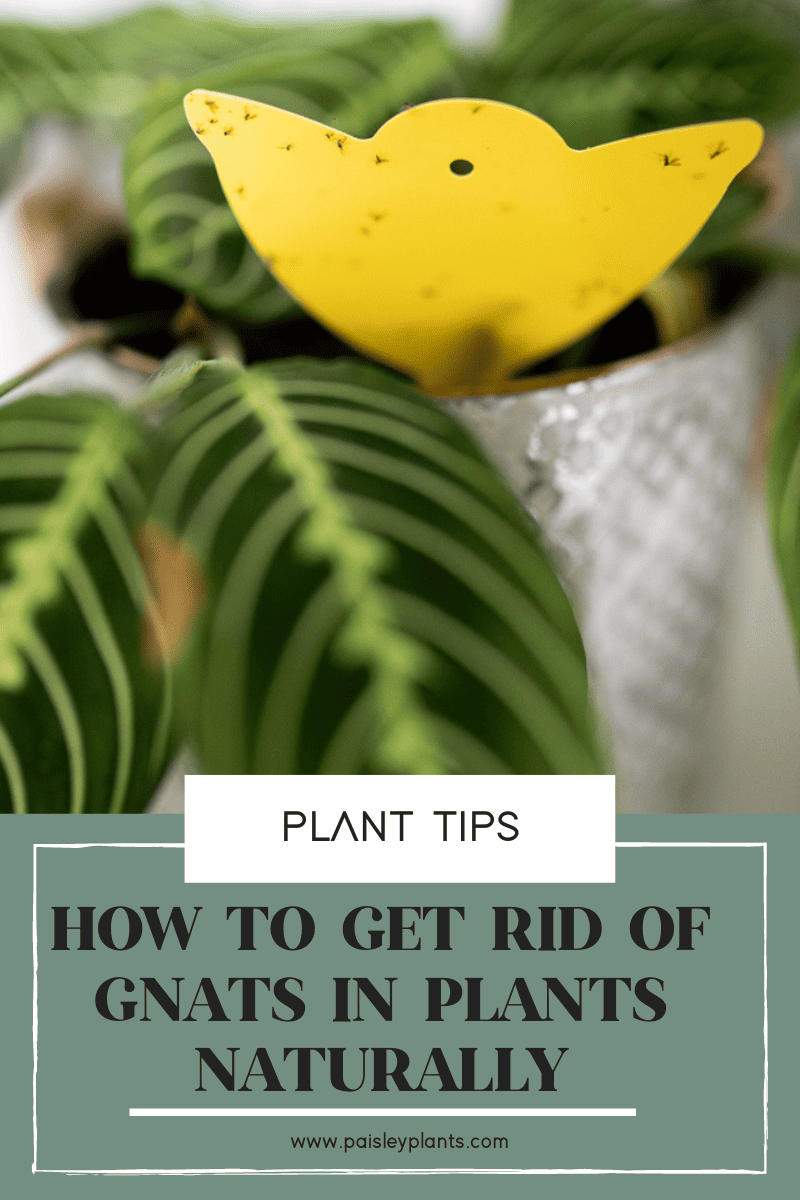
This post includes affiliate links.
Table of Contents
What Causes Gnats in Plants
Plant gnats are caused by soil that is wet. They’re not going to appear after a regular watering but you can get a fungus gnat infestation with overwatering or your plant roots begin to rot.
They are attracted to the damp soil of potted houseplants. They need moist soil to lay their eggs and the organic matter in dirt feeds the fungus gnat larvae. Besides being annoying, overwatering your plants can damage your plants.
Not dealing with them will guarantee the gnat problem will continue, so that is not an option! Let’s look at a few ways to try to eliminate them.
How to Get Rid of Gnats in Plants Naturally
1. Dispose of Soil and Repot
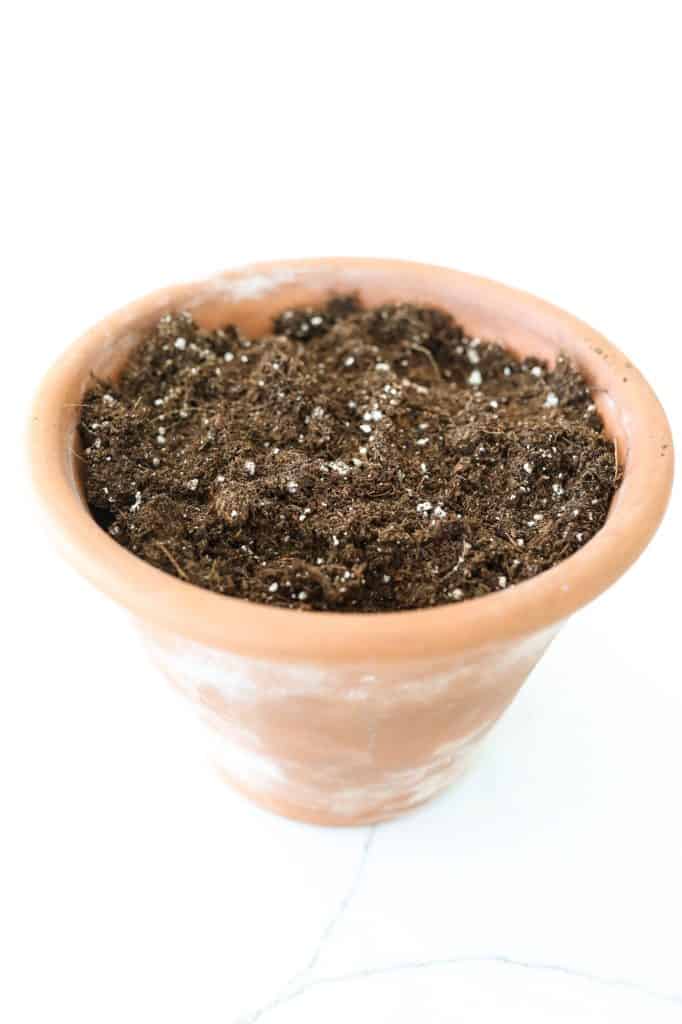
This method is one that seems to be an easy solution to rid yourself of gnats. Take your plant out of the pot and soil it’s in and completely dispose of the soil.
Next inspect the roots. If there’s any rotted or dead roots, cut them off. Depending on how much soil is stuck on the roots I’ll oftentimes wash the roots to get all of the soil off so I know the gnats have been cleared. away.
Also be sure to clean the pot really well! To ensure there’s no leftover fungus gnat eggs, I’ll bleach my pots.
After the pot is clean you can repot your plant! Use fresh soil to repot your plant.
However, this isn’t a “one and done” type of solution either. You might replace the old soil with new soil only to find that the new soil has gnats also! How frustrating this can be! Let’s move on to our second tip which helps with that!
2. Bake Your Soil
Sometimes you might buy a new bag of potting soil, use it and find that the gnats have multiplied. This can be from the soil being stored in very wet conditions.
You may have to completely dry out this new soil before you use it. This can be done by heating the soil on a flat tray or pan in your oven.
You will need to place your soil in an oven safe pan and cover it with foil. In order to kill the fungus that the gnats originate from, you will need to heat your soil to 180 – 200 degrees F. Anything higher than this temperature can produce toxins. Remove from the oven and allow to cool, leaving the foil in place until ready to use.
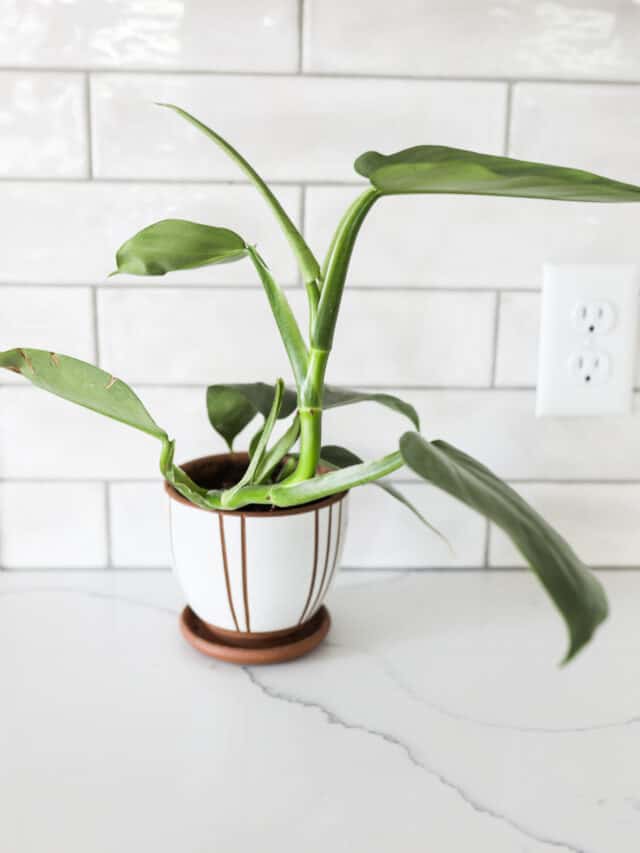
You can also use your microwave to sterilize the soil. Fill a clean, microwave safe container with moist soil. Quart size containers with lids are preferable as foil won’t work in the microwave, obviously. Add a few vent holes in the lid. Heat the soil for about 90 seconds per every couple of pounds of soil on full power. This will need to cool before use.
You can also use a plastic bag in the microwave to heat your soil. Heat this with the top of the bag open to release the steam that will come out. Heat the soil for 2 to 2 and ½ minutes on full power. Close the bag and allow it to cool before removing from the oven.
Any of the above methods should give you sterile soil to start over with potting your plants. Remember that overwatering will produce moist soil where the gnats love to lay their eggs and will most likely start the cycle of life all over again for them. You don’t want that, for sure!
3. Neem Oil
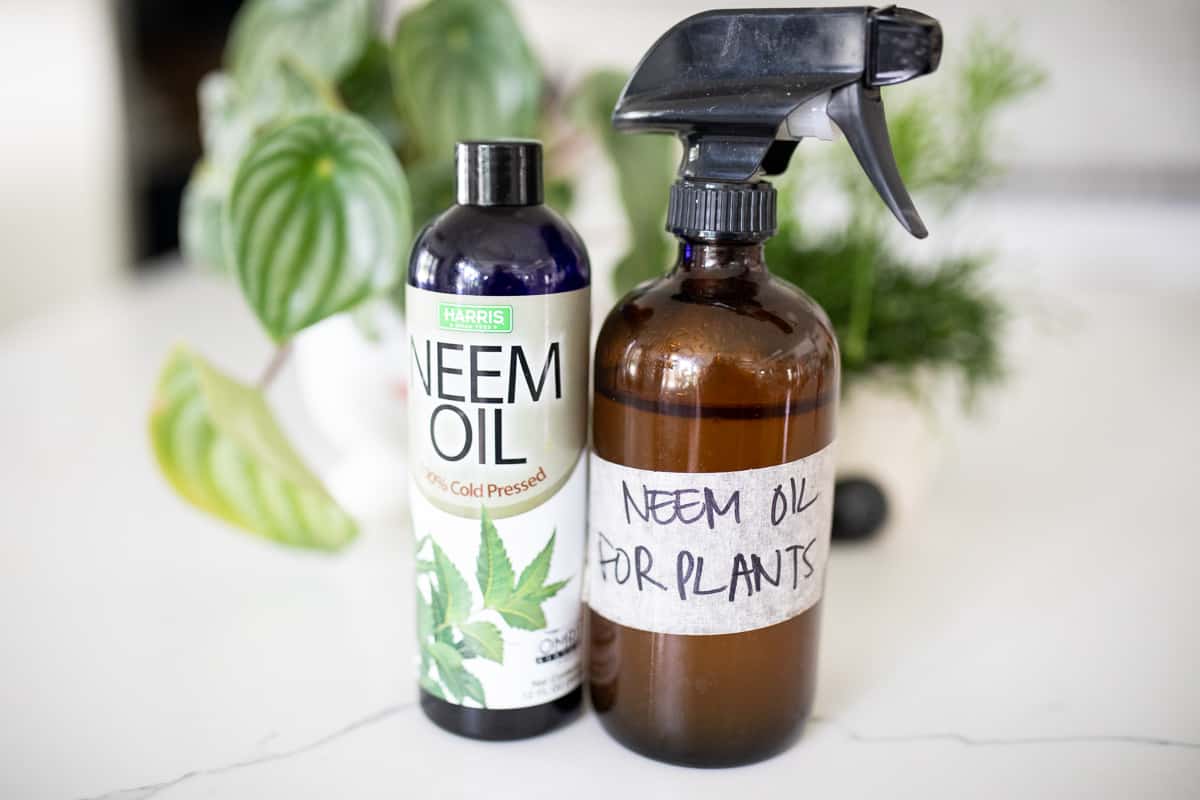
I personally use neem oil a lot as a homemade gnat spray. I will spray all of my new plants with Neem Oil when I get them home from the nursery and I’ll also use it when I repot plants to kill off any gnats that could have been living in the soil.
One advantage of using Neem Oil is that it kills the gnats in the larval stage as well as the adult gnats. This will speed up the process of eliminating the pests for good! To use the Neem Oil, mix up a teaspoon of dish detergent with a gallon of water and two tablespoons of Neem Oil.
Use this in a spray bottle as a repellent to the gnats. Repeat spraying until the gnats are completely gone. The time frame may vary, but you should see results in a pretty short length of time! You can purchase Neem Oil online or at garden centers.
4. Yellow Sticky Traps
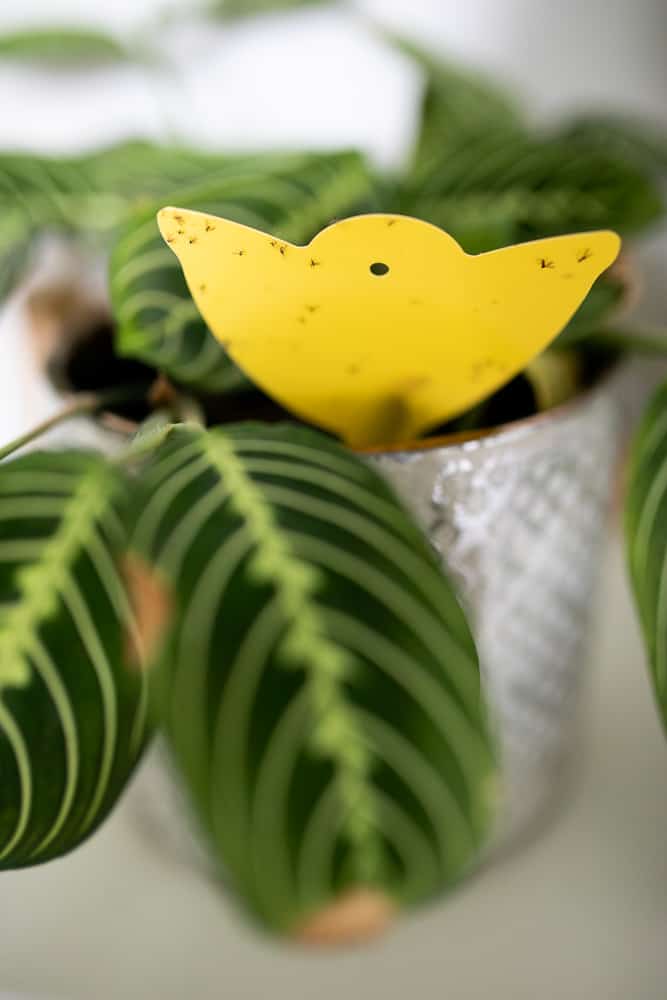
If I discover gnats in my plants the very first thing I do is put in yellow sticky fly traps. If you don’t want to risk adding any DIY solutions to your plants, sticky traps are a good solution and do a good job of catching fungus gnats.
The only drawback is that they only catch the full grown gnats and don’t kill the larvae. This usually needs to be dealt with also so that they don’t keep reappearing.
You will have to determine if you want to continue having problems or if you want to eliminate them completely. You can use the sticky traps in tandem with other methods and this can help eliminate at least the live, flying pests quite effectively. It’s up to you!
5. Cinnamon
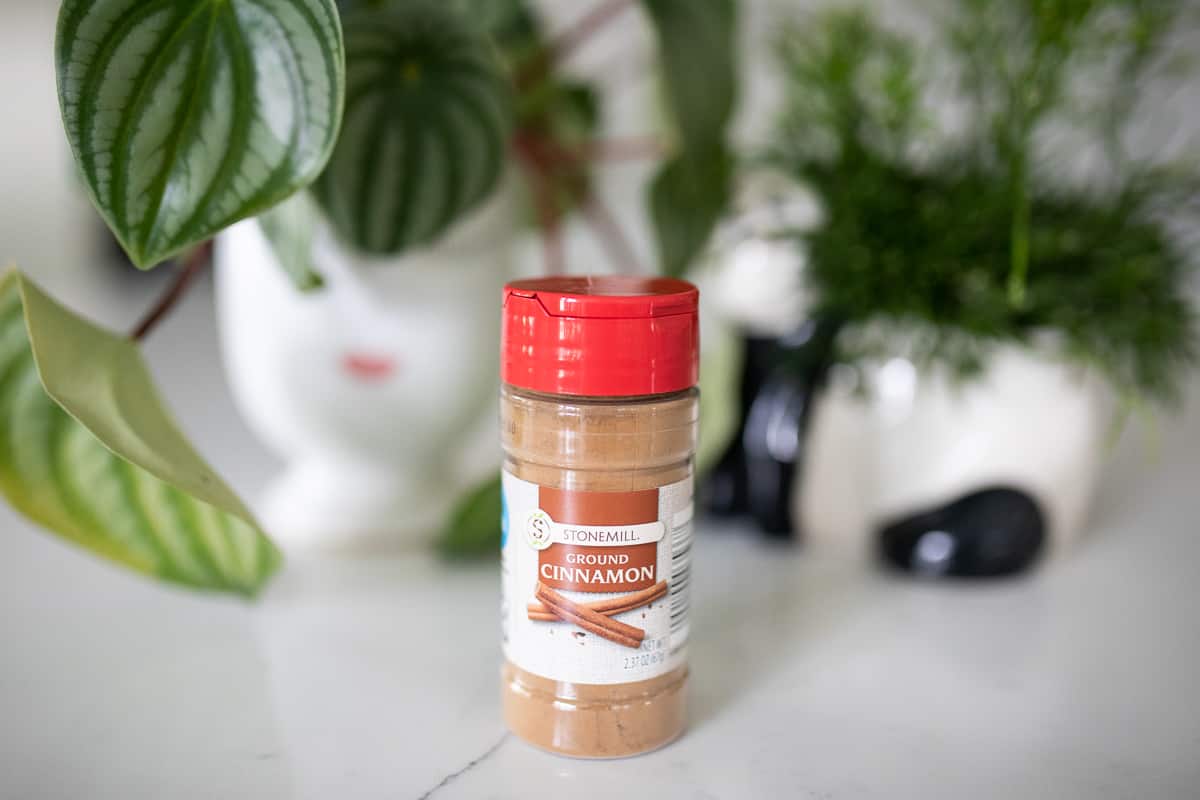
You can also sprinkle cinnamon across the top of the soil in your houseplants. Cinnamon is a powerful natural fungicide and a natural gnat repellent. It will kill off the gnats’ primary food source. It makes the soil inhospitable and unuseful to the growth of the larvae.
You can also use cinnamon sticks. Just pop them straight into the soil and voila! That may even be an easier way to use cinnamon, but sprinkling it over the entire soil surface is very effective.
As I said, this won’t directly kill the gnats, but will cut off their food source, so you will still have to eliminate the bugs using another method.
6. Hydrogen Peroxide
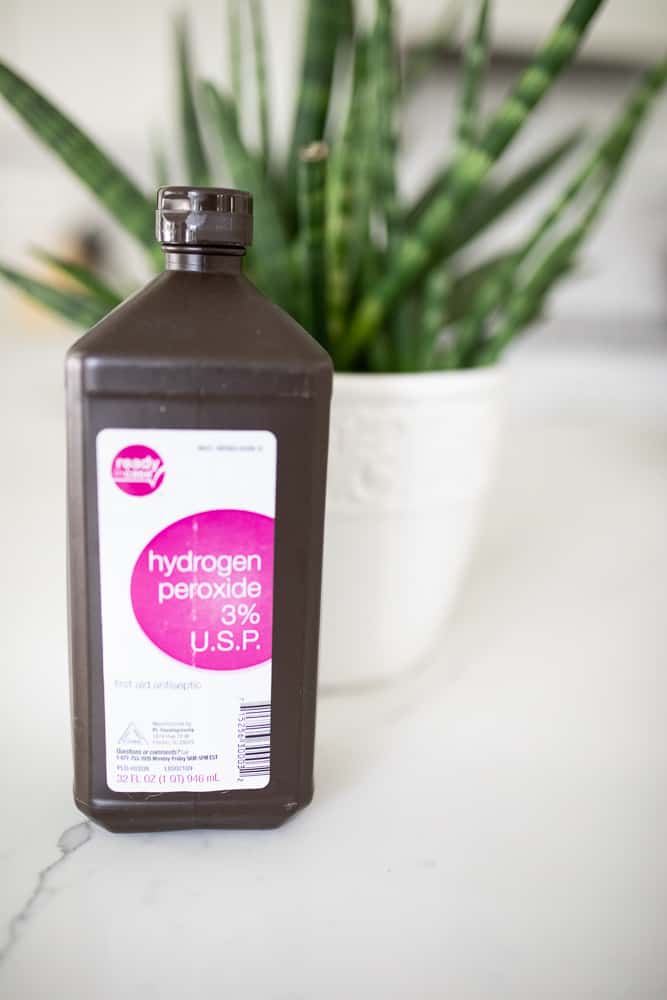
You can also mix a one part hydrogen peroxide to four parts water solution to water your plants with. Saturate the soil in your plant until it runs through the drainage holes in the bottom of the pot.
Wait for 10 minutes and repeat the above step again. You should do this once a week until the gnats are gone.
7. Apple Cider Vinegar

You can also use apple cider vinegar to make your own organic traps to kill the adult fungus gnats. Fill the bottom of a deep bowl with apple cider vinegar, add several drops of dish soap.
The gnats love the smell of these natural ingredients and will be attracted, fall in and die!
8. Water With Mosquito Dunks
Mosquito dunks are a safe, non-toxic way to treat your fungus gnats. These work through its active ingredient called Bacillus thuringiensis subspecies israelensis or BTI. This is a bacteria that targets the larvae and gnats, leaving your plants completely healthy.
To use it, place a mosquito dunk in your watering can and let it soak overnight. Use this water to water your plants!

Natural Ways to Prevent Gnats in Your Houseplants
Rather than dealing with a gnat problem when it happens, let’s chat through a few ideas on how to prevent gnats in the first place!
1. Don’t Overwater!
This is the number one tip for preventing gnats in the first place. Gnats can’t grow in dry soil, only wet soil due to too much moisture. Be sure that your plant actually needs more water before watering it.
If you’re prone to overwatering (like me!) use a moisture measure meter to help you detect if your plant’s soil is wet or dry. You can also stick your finger into the soil to see if the soil a few inches down is still wet.

2. Quarantine New Plants
Whenever you bring a new plant into your home, put it in a spot away from other plants for 2 weeks. I typically like to add a yellow sticky trap right away so I can see if it has any bugs.
This will allow you to identify any gnats or bug infestations and treat them before getting your other plants infected.
3. Inspect Plants Regularly
The best way to prevent a massive gnat infestation is to treat it early! If you suspect your plant may have gnats, inspect the top layer of soil immediately after watering it.
You’ll begin to see the gnats squirming to the top and flying out of the soil. If you see this happen, use the ideas above to treat it.
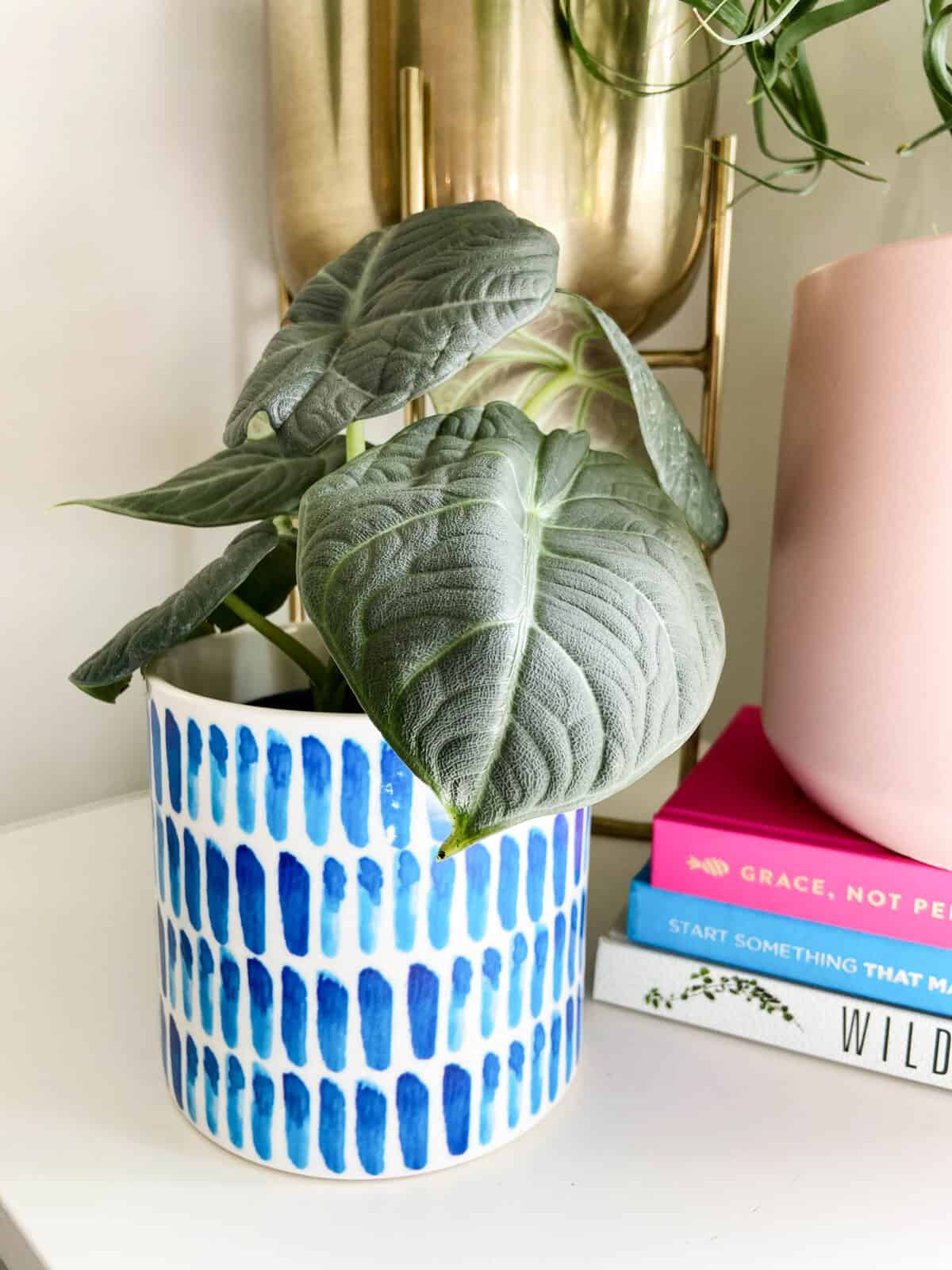
In Conclusion
Obviously, this isn’t an end all and be all when it comes to eliminating fungus gnats, but it at least gives you a start and some ideas to use when you find you have this problem. There is a lot of research online about this issue, so you can also look there to find a solution.
You may find that you will have to try several different methods before you finally find the best solution for your situation.
Trial and error is always a good way to go, but once you figure it out, you will be on your way to having happy, healthy houseplants!
And, you won’t have to deal with those pesky little guys any more either! As always, keep on growing!
